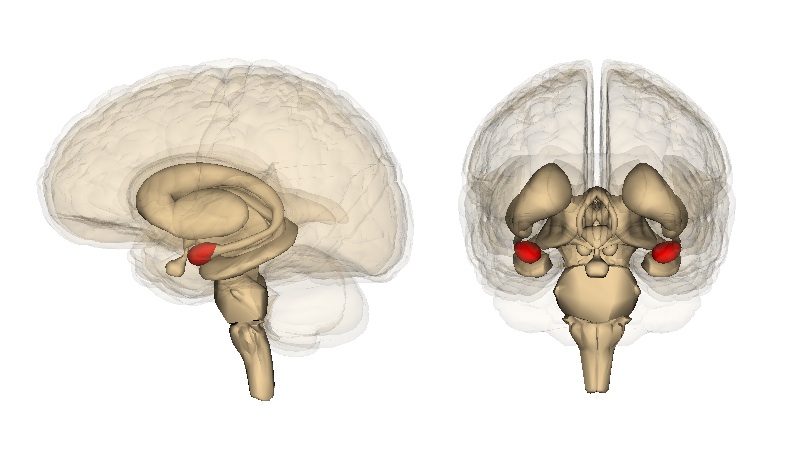Science News
Social Network—in Your Head
December 29, 2010

Scientists have found a size correlation between a region of the human brain and a person’s social network.
The amygdala is a small, almond-shaped structure in the brain. We have two, one on each side of the brain, and researchers understand they play a large part in our emotions. The amygdala can vary in volume from 2.5 cubic millimeters to twice that size.
Researchers have known for some time that the size of non-human primates’ amygdalae depends on the social circles of the particular species. The larger the amygdala, the more social the primate. That lead the authors of a new paper in Nature Neuroscience to wonder if the same could be true of humans.
Using magnetic resonance imaging, the researchers studied 58 healthy humans’ brains—focusing on the amygdala and the hippocampus, another emotional area of the brain. They also had the subjects fill out surveys about their social lives—their number of friends and the groups to which they belonged.
While researchers detected no variations in the hippocampus, they found that the volume of both amygdalae was greater for those people with more robust social lives. The researchers also measured “happiness”—things like life support and social satisfaction—to make sure it wasn’t something else causing the larger-sized amygdalae. Sure enough, the volume of the amygdala did not correlate with other social variables.
While scientists can see that the relationship between the amygdala and social groups exists, they don’t know which causes the other. Do larger social circles increase the amygdala’s size, or does a larger amygdala naturally lead the person to larger social groups? With all of the current brain research underway, we may soon find out which comes first.
Images are generated by Life Science Databases (LSDB)